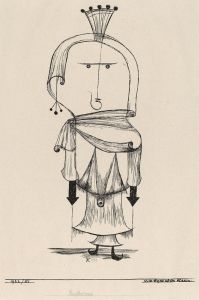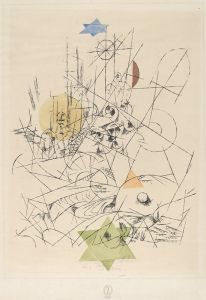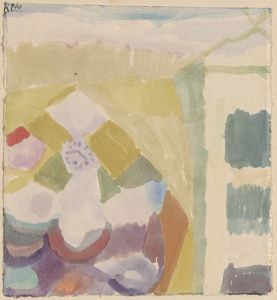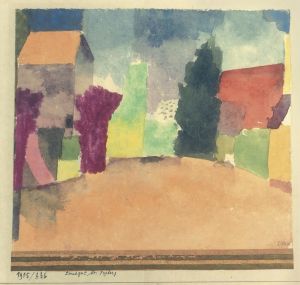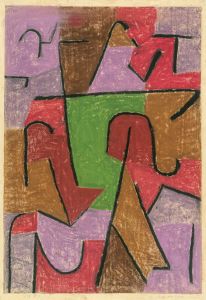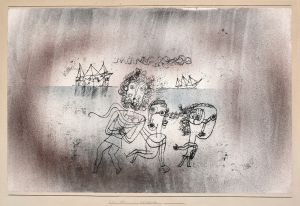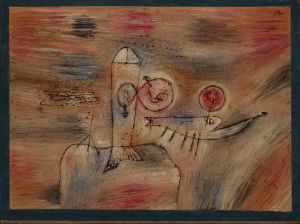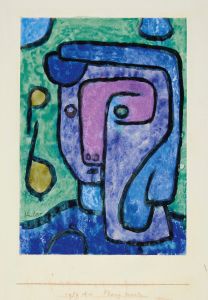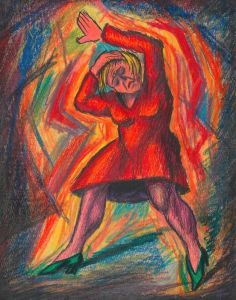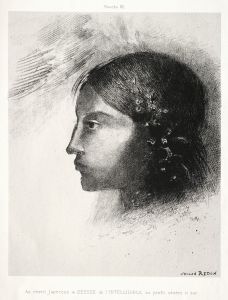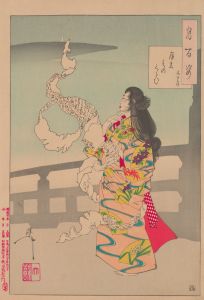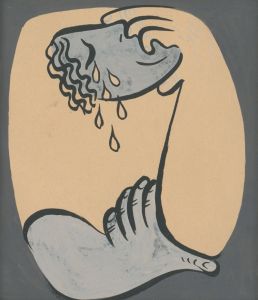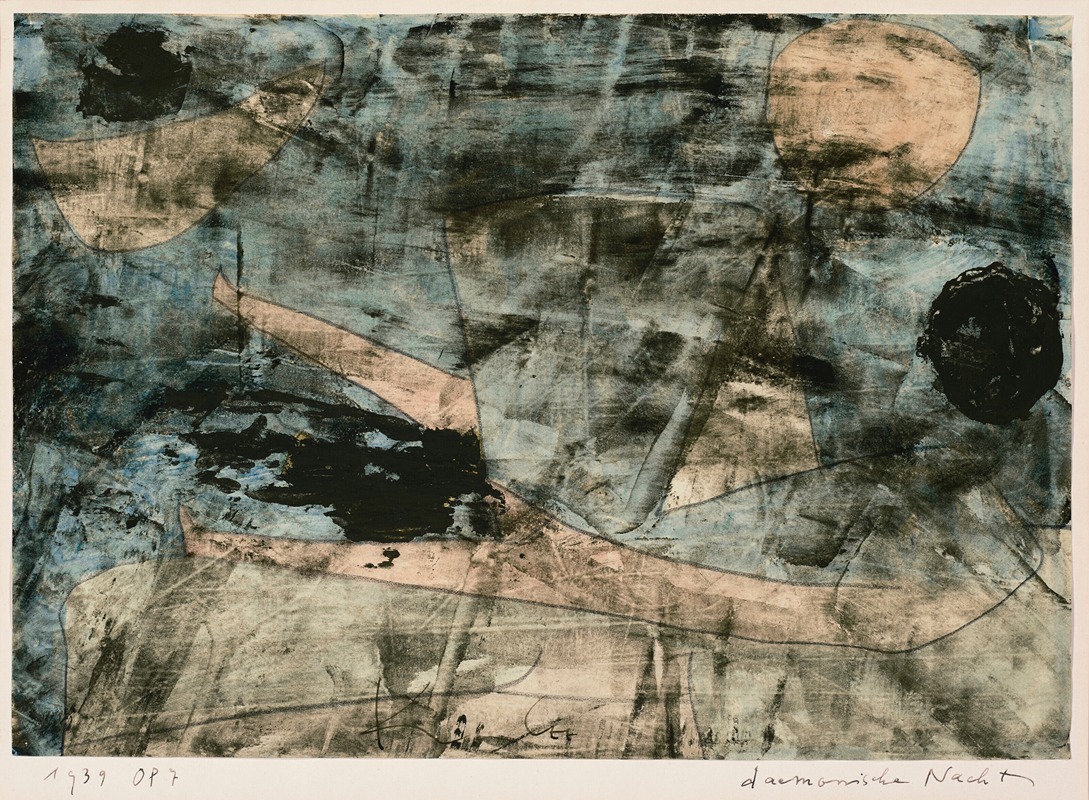
Dämonische Nacht
A hand-painted replica of Paul Klee’s masterpiece Dämonische Nacht, meticulously crafted by professional artists to capture the true essence of the original. Each piece is created with museum-quality canvas and rare mineral pigments, carefully painted by experienced artists with delicate brushstrokes and rich, layered colors to perfectly recreate the texture of the original artwork. Unlike machine-printed reproductions, this hand-painted version brings the painting to life, infused with the artist’s emotions and skill in every stroke. Whether for personal collection or home decoration, it instantly elevates the artistic atmosphere of any space.
Dämonische Nacht (Demonic Night) is a painting by the Swiss-German artist Paul Klee, created in 1921. Klee was a prominent figure in the early 20th-century art world, known for his highly individual style that was influenced by movements such as Expressionism, Cubism, and Surrealism. His works often feature a unique blend of abstraction and figuration, characterized by a playful use of color and form.
Paul Klee was born on December 18, 1879, in Münchenbuchsee, near Bern, Switzerland. He was a versatile artist, skilled in both painting and drawing, and his work often explored themes of fantasy, dreams, and the subconscious. Klee's artistic journey was marked by his association with the Bauhaus school, where he taught from 1921 to 1931, and his involvement with the Blue Rider (Der Blaue Reiter) group, which he joined in 1911.
Dämonische Nacht is a notable example of Klee's work from the early 1920s, a period during which he was deeply engaged with the Bauhaus movement. The painting reflects Klee's fascination with the mystical and the supernatural, themes that recur throughout his oeuvre. The title, which translates to "Demonic Night," suggests an exploration of dark, otherworldly forces.
The composition of Dämonische Nacht is characterized by its abstract forms and a rich, dark color palette. Klee often employed a technique that involved layering translucent washes of color to create depth and luminosity. In this painting, the interplay of shapes and colors evokes a sense of mystery and unease, drawing the viewer into a nocturnal world populated by enigmatic figures and symbols.
Klee's use of geometric shapes and lines in Dämonische Nacht demonstrates his interest in the underlying structures of the natural and spiritual worlds. His work often blurs the boundaries between the real and the imaginary, inviting multiple interpretations. The painting's abstract nature allows it to be open to personal interpretation, with viewers bringing their own experiences and emotions to their understanding of the work.
Throughout his career, Klee was influenced by a wide range of artistic traditions, including the art of children, the mentally ill, and non-Western cultures. These influences are evident in the spontaneity and inventiveness of his compositions. Dämonische Nacht, like many of Klee's works, reflects his belief in the power of art to transcend the mundane and to connect with deeper, universal truths.
Paul Klee's contributions to modern art were significant, and his work continues to be celebrated for its originality and depth. He passed away on June 29, 1940, in Muralto, Switzerland, but his legacy endures through his extensive body of work, which remains influential and widely studied.
Dämonische Nacht is held in various public and private collections, and it continues to be a subject of interest for art historians and enthusiasts alike. The painting exemplifies Klee's unique vision and his ability to convey complex emotional and spiritual states through his art.





